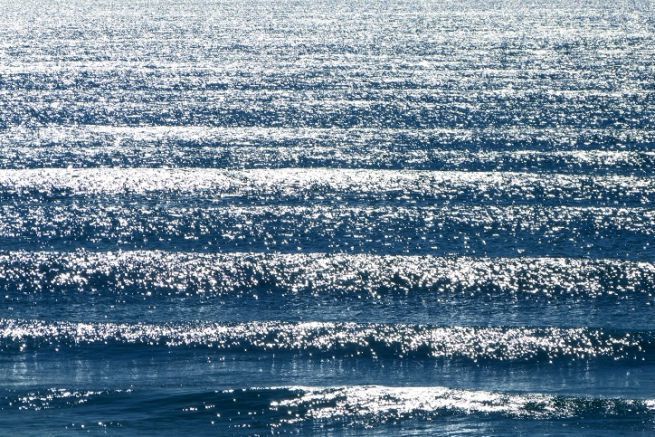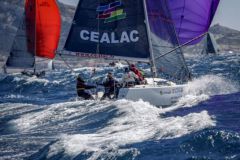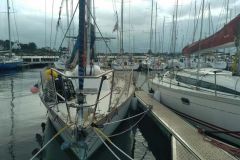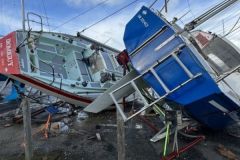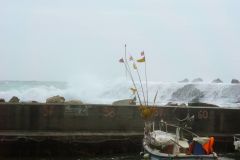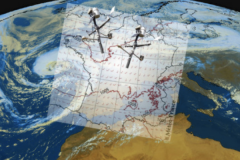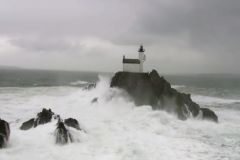What is the fetchâeuros?
The fetch is the time and distance covered by the same wind on an unobstructed body of water. The fetch can be said to be the momentum zone allowing the wind to lift a sea.
The longer the wind blows and the greater the distance it covers - thus the greater the fetch - the greater the wave height. Offshore, the fetch is generally determined by the size of the "low pressure" that produces the wind.

The black arrows show the fetch areas
How are waves born?
The waves are directly issued from the wind which blows instantaneously. The formation of the waves will depend on the fetch:
- the wind speed
- the time during which it blows
- of the distance over which it blows
For example, Ifremer oceanographers explain that " waves of 10 m height and 11 seconds period can be produced locally by a wind blowing at 45 knots, i.e. 81 km/h for 20 hours and over a distance of 250 km"
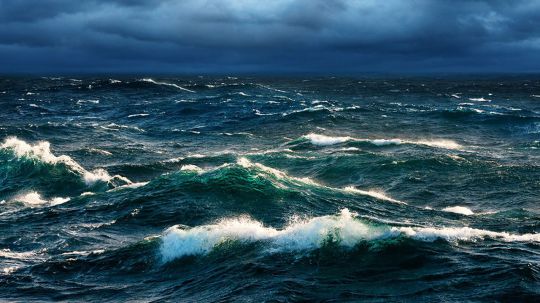
Where does the swell come from?
In the absence of wind, the waves continue to propagate freely, this is called swell. Indeed, the swell results from a wind different from the present wind. The swell is generated elsewhere, it is the diffusion of a wave. The swell is the memory of the waves, the memory of the fetch.
Ifremer researchers have observed "that a swell of 2 m height and 14-second period can be produced by a wind blowing at 36 knots, or 65 km/h, 2000 km away and 62 hours earlier."
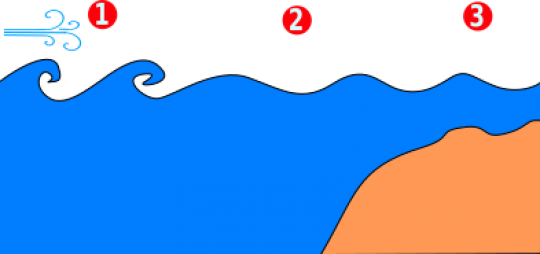
1 The fetch, creation of waves.
2 The Swell, wave dissipation
3 End of life, surge
In reality, these 3 phases often overlap.
The fetch mixes with a swell and vice versa. At the end of its life, the coast, the currents and the local winds will modify the waves.
What happens to the waves and the swell?
Near the coasts, the waves and swell are modified by the bottom they encounter.
They will eventually be directed by coastal effects. But, in all cases, the energy will end up in total dissipation, this is what we call the break-up. We observe this break-up on beaches, shoals, or reefs, but also in the open sea.
The wave height scale
As for wind or cloudiness, we have a scale to evaluate wave heights. The Douglas scale indicates the total sea, i.e. the wind sea added to the swell.
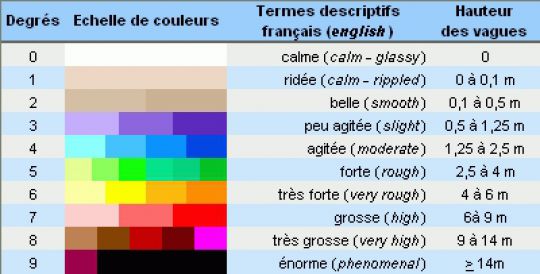
The profile of a wave
The highest point of a wave is called the crest, the lowest is the trough. The size of the wave is determined by the distance between the crest and the trough. The period is the time between two crests. A long period is synonymous with a powerful swell.
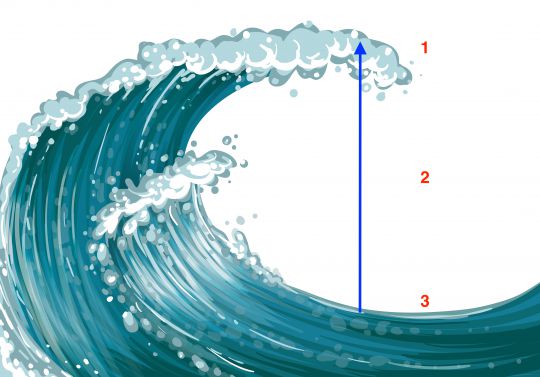
1 The peakâeuros; 2 The wave heightâeuros; 3 The trough
The surge
A wave breaks when it reaches a certain slope. We can distinguish 2 types of breaking.
- The breaking by the wind, they are the famous sheep. The relationship between the height and the slope makes that the water has no other way out than to follow the gravity and it collapses while breaking.
- The breaking of the waves on the coast. The more powerful the swell and the steeper the slope, the more powerful the break. On a gentle slope, we speak of sliding breakers. On a medium slope, it is called a plunging breaker. And in case of strong slope, it is a swelling breaker.
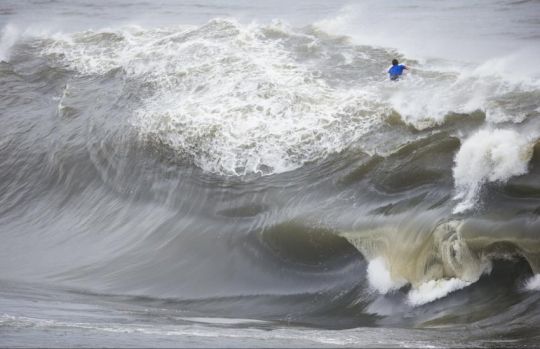
An inflated wave at the "Bear" spot in Australia (photo: Red Bull Content Pool)
